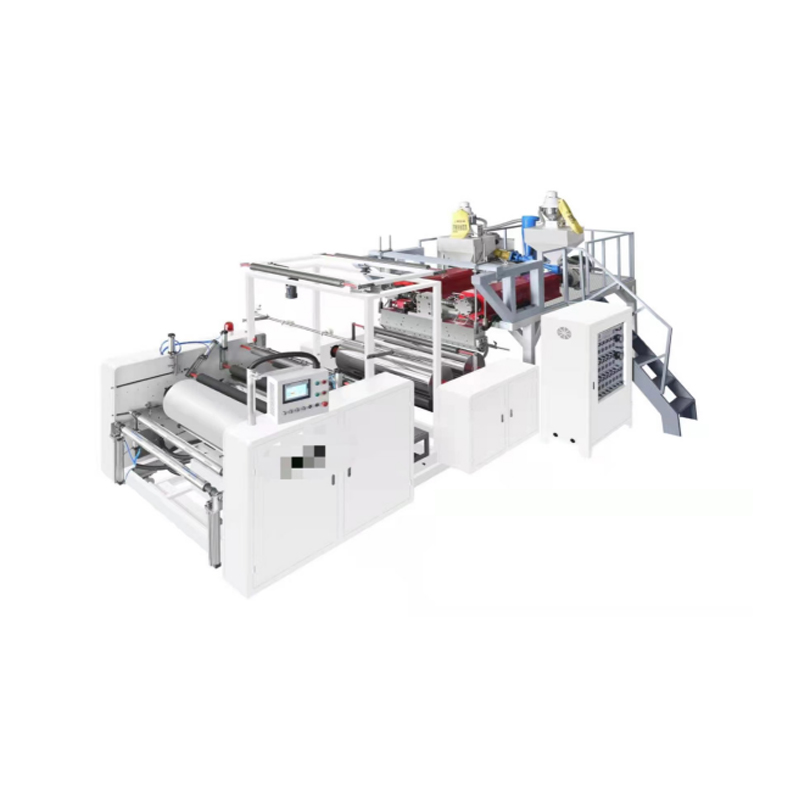Automatic Cling Film Production Equipment: Efficiency and Quality in Flexible Packaging
 By Admin
By Admin
Cling film, also known as stretch film or plastic wrap, is a staple in both commercial and household packaging. It plays a crucial role in food preservation, product bundling, and shipping protection. As consumer demand rises for higher-quality, environmentally friendly, and cost-effective packaging solutions, manufacturers are turning to Automatic Cling Film Production Equipment to meet these evolving requirements. This sophisticated machinery combines automation, precision, and flexibility to optimize production processes and deliver consistent, high-performance films.
1. Fully Automated Operation for Increased Productivity
One of the defining attributes of modern automatic cling film production lines is their high degree of automation. From raw material feeding to film extrusion, cooling, winding, and packaging, the entire process is streamlined with human intervention.
Automation enhances production speed and consistency, allowing machines to operate continuously at outputs ranging from 200 to 600 kilograms per hour depending on the model and film specifications. The system's ability to maintain steady operation reduces downtime, waste, and boosts overall equipment effectiveness (OEE).
2. Precision Film Thickness and Uniformity Control
Consistent film thickness is vital for cling film’s functionality, affecting stretchability, cling force, and transparency. Automatic production equipment incorporates real-time thickness measurement systems, often using non-contact laser or infrared sensors, to monitor film gauge throughout the process.
These sensors relay data to intelligent control units that dynamically adjust extrusion parameters and die gaps to maintain tight thickness tolerances, typically within ±3%. This precision reduces material consumption and enhances film performance on packaging lines.
3. Advanced Extrusion Technology
Automatic cling film equipment utilizes high-performance single or multi-screw extruders tailored for polyethylene resins, primarily low-density polyethylene (LDPE) and linear low-density polyethylene (LLDPE). These extruders ensure uniform melting and stable melt flow, which are essential for producing films with mechanical properties.

Many systems feature specialized screw designs and cooling zones that optimize polymer crystallinity, resulting in films with clarity, stretchability, and puncture resistance.
4. Integrated Bubble Cooling and Air Ring Systems
Cling film production typically employs blown film extrusion methods. Automatic equipment integrates precision air rings and cooling systems that regulate bubble formation and cooling rates. These components maintain bubble stability and uniform film thickness while enhancing optical qualities like gloss and transparency.
Efficient cooling also reduces film haze, a critical parameter for consumer appeal in food packaging applications.
5. Intelligent Winding and Roll Handling
After extrusion, the film is wound onto cores to form rolls ready for shipment or further processing. Automatic cling film production lines feature servo-driven winding systems that control tension and winding speed precisely.
This prevents roll defects such as wrinkles, telescoping, or edge damage. Automated roll changeovers and core loading reduce manual labor and production interruptions, supporting higher throughput and consistent roll quality.
6. User-Friendly Interfaces and Remote Monitoring
Modern automatic production equipment is equipped with touchscreen human-machine interfaces (HMIs) that offer intuitive control and real-time process monitoring. Operators can adjust parameters such as extrusion temperature, screw speed, bubble size, and winding tension easily.
Advanced models support remote diagnostics and data logging, enabling proactive maintenance, rapid troubleshooting, and process optimization—key factors in reducing downtime and improving product consistency.
7. Energy Efficiency and Environmental Compliance
Recognizing the importance of sustainability, many automatic cling film machines incorporate energy-saving components such as variable frequency drives (VFDs), insulated barrels, and efficient heaters. These features lower power consumption without compromising extrusion stability.
Additionally, these machines often support the use of recycled polyethylene and bio-based resins, aligning with regulatory requirements and consumer demand for environmentally friendly packaging.




